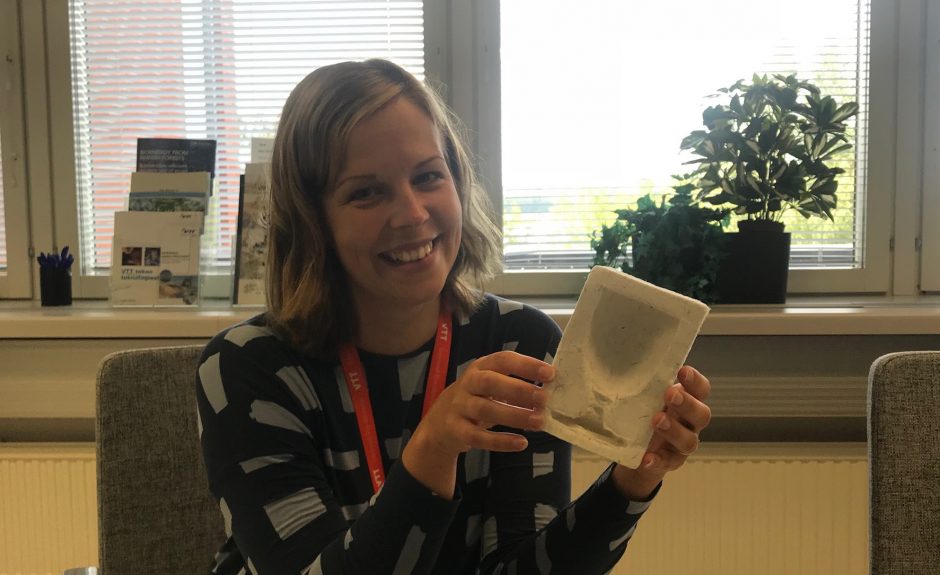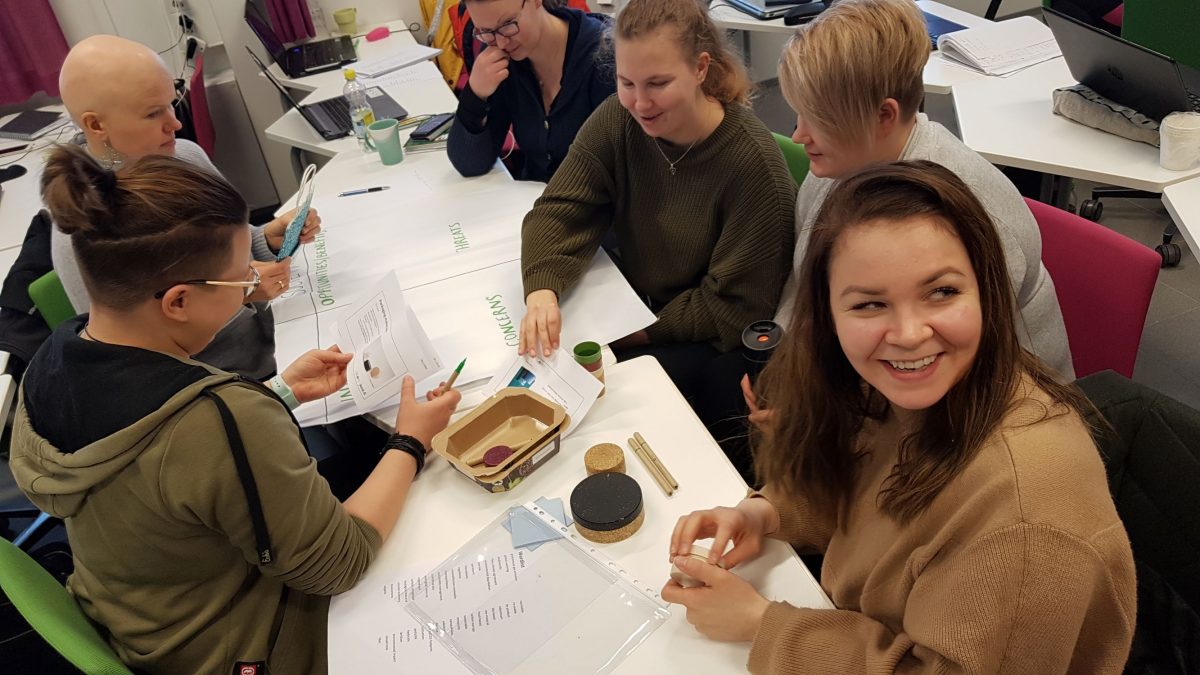The goal of the Nordic Hub in the European BLOOM bioeconomy project was to communicate the opportunities and challenges with the bioeconomy, as well as to increase knowledge and demand for forest-based products and materials amongst the public. Several initial meetings were held with research institutes, universities and companies in Finland and Sweden to understand their role in the bioeconomy, the products and services they provide and the challenges they are facing in communicating with society. From this knowledge gain, we set out on an exciting journey into the innovative sector of the forest bioeconomy.

– Cellulose is the new plastic but to get our research out into the market and to consumers, we need companies that can invest in this new research, said Elina Pääkönen, a VTT Research Scientist.
To find out who to target and how to design our communication activities we organised co-creation workshops where stakeholders from civil society, the research and innovation sector, academia and education, decision-makers and industry separately in both countries, co-created communication activities about the bioeconomy and a forest-based circular economy. Participants exchanged ideas, ambitions and challenges, as well as opinions and experiences of bioeconomy.
One of the first things we did in the co-creation workshops was to find answers to questions such as, What is the bioeconomy? Is it always climate-friendly? Does it mean the sustainable use of natural resources? What are renewable resources and bio-based production? Does bioeconomy include the circular economy and ecosystem services, or anything else?
Based on discussions, we developed a working definition of bioeconomy concept in Sweden:
THE BIOECONOMY is economic and societal development based on RENEWABLE RESOURCES. It encompasses products/services made from natural resources, bio-based materials and processes (land, forest, sea and freshwater). The bioeconomy also includes trade in ecosystem services. The bioeconomy REQUIRES changes to processes and skills in society. A transition to the bioeconomy CAN lead to sustainable societal development and to a circular economy.
THE BIOECONOMY is about NOT using finite resources such as fossil raw materials and minerals. It does NOT need to be small-scale, ecological, circular, sustainable, non-polluting or likeable!
Bioeconomy and sustainability
There are already a large range of regional and national activities and campaigns addressing the forest industry, forest-based products and new innovative materials. But the co-creation activities showed that at least in Sweden the term ‘Bioeconomy’ has been partly kidnapped by the forest industry, and feels somewhat commercialised and thought of as a marketing campaign in itself.
As an outcome of the co-creation workshops, the Nordic hub wanted to build a more neutral platform to discuss the bioeconomy and to develop communication activities targeting young people, particularly girls. We created opportunities for regional and national stakeholders to collaborate and exchange knowledge, and to find new ways to engage the public and young people.
One way of achieving a more sustainable world is by raising the general public’s awareness about the environmental impact of their lifestyle and the products they buy and use. Even though there is a wealth of information available, the concept of bioeconomy and its potential in tackling global sustainability challenges is still rather unknown for many within the EU. Therefore, communicating bioeconomy in a clear, straight forward and understandable way is key in order to reach a wider public and to raise their awareness about the bioeconomy’s future possibilities and role in reaching the UN Sustainable Development Goals.

A fresh boost to bioeconomy communication
We learned throughout the BLOOM project the importance of encouraging the public to think critically by giving them enough information and creating space for discussion. This way, people could observe and reflect on the impact of their daily decisions from different perspectives. The solutions are hardly ever black or white – especially when it comes to bioeconomy and its many perspectives of sustainability.
In the workshops that were held, most stakeholders agreed that young people and especially young women are very concerned about environmental issues and keen to act in more sustainable ways. We need to listen and create opportunities for dialogue with local young people in order to create ideas together with them about how, where and when to communicate and what kind of information is needed. If the communication is not interesting enough for them or not connected to their daily lives, they are not going to listen.
One output of the workshops was the creation of social media campaigns in Finland and Sweden, for example during ”Global Week to #Act4SDGs” to promote action in solidarity with citizens across the globe, including youth groups through #FridaysforFuture and the youth-led #globalclimatestrikes. The campaign wanted young people to reflect on #BIOECONOMYinMYdailylife in a series of images shared through social media.
We also visited schools and attended a festival in the suburbs to talk with young people about the bioeconomy in their local communities. Using hands-on examples of traditional bio-based products and new innovative ones, we started dialogues around bioeconomy and the most important natural resource in the Nordics: the forest and wood.

Throughout the project we have noticed that the students and young people already know quite a lot about bioeconomy, but that they really respond to concrete examples of bio-based products and especially stories about how they are produced. Young people and their teachers – need and want more information about bioeconomy.
During the BLOOM project it has become clear that youth are interested in methods used to measure sustainability and in responsibility aspects. As long as companies, research institutes and universities are offering clear, hands-on and evidence based information in a dialogue manner citizens will be able to make informed decisions which will contribute to creating a sustainable future in a circular and biobased way.
Let the bioeconomy bloom across Europe and beyond
During three years that ended with a pandemic, we have identified stakeholders, connected with them, and organised events and dialogues across Sweden, Finland, the Nordic and Baltic countries, Europe, Canada and all over the world. There is a huge engagement for making bioeconomy a reality and creating a gamechanger for the industry, communities, schools and other education facilities, research, innovation and policy makers. The Bloom project has helped create a common understanding and develop insights about both cultural differences and common grounds between different countries. Let’s keep on moving forward with a circular bioeconomy as the goal and a #forest4future.

